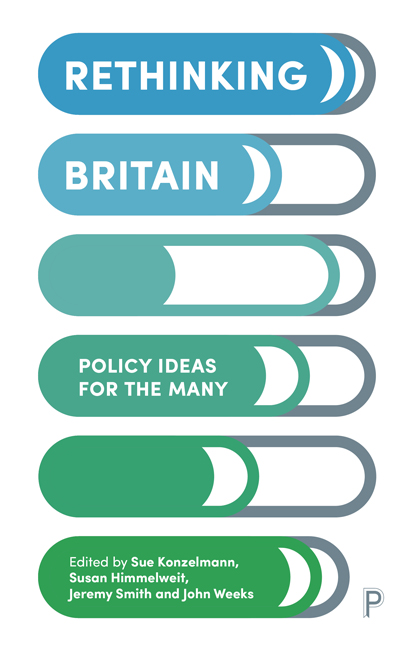Book contents
- Frontmatter
- Contents
- List of Tables and Figures
- The Contributors
- Foreword
- Introduction
- Interlude: ‘Mirror, Mirror, On the Wall – Who has the Highest Debt of All?’
- Part One Building a Full-Employment Economy: Introduction
- Part Two Public Investment – Prioritising Society Rather than Profit: Introduction
- Part Three Making Finance Work for Society: Introduction
- Part Four Genuine Social Security: Introduction
- Part Five How to provide for Social Needs: Introduction
- Conclusion
- Jargon Busters
- References and Further Reading
- Index
6 - Does the UK Really have too much Debt?
Published online by Cambridge University Press: 11 March 2021
- Frontmatter
- Contents
- List of Tables and Figures
- The Contributors
- Foreword
- Introduction
- Interlude: ‘Mirror, Mirror, On the Wall – Who has the Highest Debt of All?’
- Part One Building a Full-Employment Economy: Introduction
- Part Two Public Investment – Prioritising Society Rather than Profit: Introduction
- Part Three Making Finance Work for Society: Introduction
- Part Four Genuine Social Security: Introduction
- Part Five How to provide for Social Needs: Introduction
- Conclusion
- Jargon Busters
- References and Further Reading
- Index
Summary
What's the issue?
During 2008–11 the Labour government successfully implemented counter-cyclical fiscal policy to moderate the impact of the global financial crisis. As a result of the fiscal deficits in those years, the outstanding net public debt by the generally accepted measure rose from £560 billion in mid-2007 to £1.1 trillion by the 2010 General Election. Despite the austerity rhetoric of the subsequent coalition and Conservative governments, by mid-2018 the debt reached £1.7 trillion.
Is the present level of debt a problem requiring action? Need the debt be reduced, and is it a burden on current or future generations?
Analysis
The UK government has the tools to prevent debt default and excessive interest rates. These are not and will not be problems. Britain has a national currency managed by a national central bank. As a result, the British government can never default. It can replace maturing public bonds with new ones. Should private buyers refuse to purchase the bonds at the interest rate set by the British government, those bonds can be sold to the Bank of England. The option to sell to the Bank of England provides a mechanism to prevent excessively high bond rates.
The size of the public debt is not a problem. Figure 2 shows that publicly issued bonds or ‘gilts’ amounted to just over £2 trillion, which was 96 per cent of GDP at mid-2018. This standard measure used by the Treasury is in line with international practice. It equals total public bonds minus government liquid assets such as Treasury holdings of foreign currencies. Part of that amount, £251 billion, represented government ownership of nationalised banks, the largest public holding in HSBC. While technically a liability, these bonds have an equivalent asset in bank balance sheets, bringing the effective debt down to 84 per cent of GDP.
The Bank of England held about 23 per cent of this amount (£466 billion), most of it the result of asset purchases from private corporations, so-called quantitative easing (QE). When this amount of debt, what the public sector owed itself, is subtracted, we get the outstanding debt, the debt that the UK government owes to others. The outstanding debt falls to 62 per cent of GDP, far below the typically cited statistic. In 2018 the outstanding public debt was not almost equal to national production (GDP), as frequently asserted.
- Type
- Chapter
- Information
- Rethinking BritainPolicy Ideas for the Many, pp. 38 - 42Publisher: Bristol University PressPrint publication year: 2019



